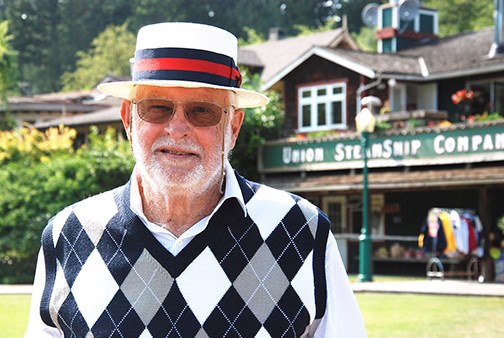It was a sailing trip in Europe that charted Rondy Dike’s path to a funky little marina for sale on an island he’d never heard of.
He and his wife Dorothy were taking a year’s hiatus from his career as an architect by sailing their 37’ Fisher from England to France and then on to the Mediterranean in the early 1980s.
The trip was also a chance to get away from the stresses inherent in their apartment building investments.
As they moored in the various ports, they realized that marinas were in some ways very much like apartment buildings — places you rented out to people.
But whereas apartment owners deal with tenants who sometimes punch holes in walls or leave a mess behind, marina tenants do their utmost not to damage their rental space, partly because they’d do much damage to their own property while they’re at it.
“No one with a very expensive boat hits my greasy old dock piles,” Rondy says more than 30 years later. As an added bonus, “People who are in marinas are usually happy because they’re playing with their toys.”
When Rondy and Dorothy returned home to Seattle — he’s originally from Oklahoma, she’s from Wyoming — they started looking for a marina to buy.
There are two types of marinas, he says: holiday marinas, which are usually more remote and open seasonally; and city marinas, which have a steady clientele but not much atmosphere because there’s not the constant ebb and flow of visiting boats.
A realtor told them about a marina for sale on Bowen Island.
“It was a beautiful town and yet close enough to Vancouver to get permanent boats and far enough away to keep it as a holiday slip.”
Now, if you think of the Union Steam Ship Company Marina today, you picture a historic looking building perched regally beside a resplendent flower garden and grassy lawn where dogs and families frolic. A wooden boardwalk connects you to the orchard cottages and Crippen Park. Walk down the gangplank to the floating marina office, and there are up to 150 boats gently rocking in the ferry wake.
That’s not the scene that greeted the Dikes. There was an ancient bungalow that doubled as the marina office which overlooked a big field which morphed into a vast mud flat before you reached water deep enough to accommodate the marina’s 30 to 40 slips.
As architectural co-ordinator for Westin Hotels — the first hotel he built with them was the Bayshore Inn — he thought he had a good idea of how long it would take to transform the little marina into destination it is today. A year maybe?
They bought the marina in 1985 and, in Rondy’s words, “some people did everything they could to stop us.” There was a committee called Save the Park, bylaws were enacted, dredging proposals were fought, roadblocks were put in their way. When the federal and provincial governments disagreed with the Islands Trust and backed the project, including providing money to dredge the cove, there was outrage. A 1989 article in the Vancouver Sun quoted one islander who opposed the effort to “turn Bowen Island into Coney Island.”
It took six years to get the marina built and 20 years to go through all the required hoops to get the floating office and clubhouse built.
As to that little bungalow, it was lifted so what’s now the gift shop could be the main floor. The bungalow became part of the second-floor living space and the flag tower was the finishing touch. The main building may look like it was here during USSC’s steamship days, but it’s totally modern.
Last year, there were 11,601 off-island visitors to the marina and its cottages; the average amount most visitors will spend overnight is $200 to $250, Dike says, so that means the marina contributes hundreds of thousands of dollars to Snug Cove’s economy every year.
It’s also is the home of their boat, Moxie, which is a word some people would say perfectly describes what it took to create USSC Marina.



